Қазақстан Республикасы Білім және ғылым министрлігі
Алматы қаласы Білім басқармасының
«Алматы сән және дизайн колледжі» КҚМК
Бекітемін
Директордың оқу-өндірістік ісі жөніндегі орынбасары
________________ Т. Кулешова
____ _____________ 20 ___ ж.
№______ өндірістік оқу сабақтары
ЖОСПАРЫ
Өту мерзімі: ___ ______________ 20___ жыл
Оқу бағамы __1_ оқу тобының №-і _МК19-7
Мамандық пен біліктіліктің коды
___121100 0 - Тігін өндірісі және киімді модельдеу
121110 2 – Пішуші
121107 2 – Сәнгер-пішуші
121108 3 –Модельер-конструктор
Бағдарлама тақырыбы: Сән ерекшелігіне қарай майда бөлшектерді өңдеу.
Сабақ тақырыбы: Бір әдіпті қақпақшалы қалтаны өңдеу.
Сабақтың типі:_аралас __
Оқыту әдістері: практика
Сабақ мақсаттары:
| білімділік | Бір әдіпті қақпақшалы қалтаны өңдеуді үйрету. |
| дамытушылық | Жауапкершілігін арттыру , ой-өрісін дамыту, дұрыс шешім қабылдау нәтижесіне баулу. |
| тәрбиелік | Еңбекке баулу. Мамандығана деген сүйіспеншілігін арттыру, жабдықтарды ұқыпты қарауды,тігіншілік өнерді дамыта білуге тәрбиелеу. |
Материалдық-техникалық жабдықтау:
| Жабдықтар, жұмыс формасы | Ине-жіп,оймақ,өлшеуіш таспа ,сызғыш, мата, тесьма, шілтер. |
| Студенттердің жұмыс формасы | Фартук косынка |
| Дидактикалық материал | Арнайы үлгілер, нұсқау картасы, коллекциялар жиынтығы және сән журналдары. |
Пәнаралық байланыс: Технология.
Өндірістік оқытудың негізгі кезеңдері мен оған бөлінетін уақыт
| Сабақтың құрылымы | Бөлінген уақыт көлемі |
| 1 | 2 |
| Ұйымдастыру кезеңі | 2 |
| Кіріспе нұсқаулық | 3 |
| Жаңа білімді бекіту | 45 |
| Ағымдық нұсқаулық | 20 |
| Қорытынды нұсқаулық | 4,35 |
| Үй тапсырмасы | 15 |
| Жұмыс орындарын жинау, тазалау | 2 |
Өндірістік оқытудың барысы
Ұйымдастыру кезеңі
журнал бойынша студенттерді түгендеу;
студенттердің сыртқы келбетін, киімдерін, сабққа дайындығын тексеру;
өндірістік оқытудың тақырыбын, мақсатын хабарлау.
Кіріспе нұсқаулық
Жаңа тақырыпты түсіндіру.
Тақырып бойынша студенттерге сұрақтар қою.
Тақырып бойынша сұрақтар: Не білеміз? Нені үйренгіміз келеді?
Машина жұмыстары кезіндегі техникалық қауіпсіздік ережелері?
Машиналық тігістер қандай жұмысты атқарады?
Машина мен көздің ара-қашықтығы?
Жаңа оқу материалдарын түсіндіру.
Қалта - киімнің құрамдас бөліктерінің бірі. Қалтаның жапсырма, жарма қалта, төс қалта, омырау қалта, ішкі қалта т. б. түрлері болады. Орналасуына қарай жапсырма қалта, төс қалта, омырау және жан қалта болып ажыратылады. Жапсырма қалталар қарапайым тік қалта, қиғаш қалта, қақпақты (клапанды) болып келеді де, олар әдіптелген тілікті, бүрмелі, оюлы және сырып тігіледі. Жапсырма қалталарды қақпағын ілгекті немесе ілгексіз, тік төртбұрышты немесе оюлы етіп жасайды. Жапсырма қалталарды бүрмелен, жиырыл, кестелеп әшекейлеп тігеді. Жоғарғы және жан қалталар түрлі формалы: тік немесе оюлы, тік немесе қақпақты т. б. түрі болады. Киімнің моделіне қарай жарма қалталарды кейде бүрменің немесе тігістің үстіне салады. Спорттық үлгідегі киімге көп жағдайда қалтаға сыдырма салынады. Қалтаны даярлағанда оның формасы мен тізілген матаның ерекшелігін технологиялық өңдеу тәсілдерін ескеру керек.


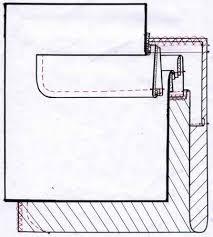
Жаңа білімді бекіту
Қалта дегеніміз?
Қалтаның түрлері?
Жапырақшалы қалтаның түрлері?
Ағымдық нұсқаулық
Бірінші мақсатты іс-әрекет:
Жұмыс орынның ұйымдастырылуын тексеру.
Қауіпсіздік және еңбек қорғау ережелерінің сақталуын тексеру.
Студенттердің практикалық тапсырманы орындауға дайындығын тексеру.
Екінші мақсатты іс-әрекет:
Жұмыстың уақытылы орындалуын тексеру.
Жұмыстың әдіс-тәсілдері дұрыс орындалуын тексеру.
Жұмыстың сапалы орындалуын тексеру.
Үшінші мақсатты іс-әрекет:
Студенттермен жеке нұсқаулық жұмыстарын жүргізу.
Қорытынды нұсқаулық
Студенттердің орындаған жұмыстарына талдау жасау.
Әр студент жұмысының орындалу сапасын айту.
Өндірістік оқыту барысында жұмысын сапалы әрі уақытында орындаған студенттерді атап айту.
Әр студенттің жұмысындағы қателігін, кемшілігін жеке-жеке айту, талдау.
Үй тапсырмасы
Иініш түрлерін жаттап, өңлу бірізділігі бойынша өңдеу.
Жұмыс орнын жинау, тазалау.
Өндірістік оқыту шебері (толық аты-жөні, қолы)
_______ Айтубар Анель Асқарқызы_
Ministry of education and science of the Republic of Kazakhstan
Almaty College of fashion and design»
Department of education of Almaty city
Claim
Associate Director
on educational and production work
________________ T. Kuleshova
____ ____________ 2020 year
PLAN
classes of industrial training No. 21
Date of the event: ___ ______________ 20___ year
Training course 1 no. MK19-7
Specialty code and name 1211000-Clothing manufacturing and modeling
qualifications 121108 3-Designer-designer
Program topic: RO 7 Module. To produce products according to types of difficulty. Process high-quality sewing products at the stage of their production.
Lesson topic: Topic 7.4. Process a Welt pocket with a flap and one lining .
Type of the lesson:combined.
Training method (s): practical,verbal.
Techniques: visual,practical.
The objectives of the class:
10) training to Consolidate knowledge, skills, skills, new material on the topic "Processing of a slotted pocket with a valve and one obtachkoy".
11) developing Develop the ability to independently perform the processing of a slotted pocket with a valve and one obtachkoy using the instruction card.
12) educational Formation of the desire for high quality.
Material and technical equipment:
Equipment, tools and inventory Universal machine, scissors, fabrics, interlining, ruler, chalk, needle, thread.
Students ' work uniform Apron, kerchief
Didactic material Instruction card,
Synopsis of an industrial training session Synopsis
Interdisciplinary connections: technology, modeling.
Course of the lesson Time (minutes)
Actions of the p\o wizard
Student actions Learning resources and materials
1 2 3 4 5
Organizational point 2-check the presence of students in the class on the magazine;
- check the appearance of students, readiness for the lesson;
- inform the subject and purpose of the training session. Attention is drawn to the master p/o. Magazine, pen.
Introductory instruction 33-repeat the completed training material:
Valves, pats.leaves?
Tell us about their processing?
What seams were used during processing?
- explain new training material Answer questions.
Samples of works.
Securing new training material 8 Asks questions:
cut?
The processing sequence?
Answer questions. Technological
sky map, samples of ready-made items.
The current instruction 5h 10) the First target bypass:
Check the organization of the workplace.
Verification of compliance with occupational safety and health measures.
Checking students ' readiness to perform a practical task.
11) the Second target bypass:
Checking the timely execution of works.
Checking the correctness of labor practices.
Checking the quality of students ' work.
12) the Third target bypass:
Individual instruction of students. Perform practical work. Technological map.
Samples of finished products.
The final briefing will allow you to analyze the work performed by students.
Report an assessment of the quality of each student's work.
Note the students who achieved the best results and quality of work performed during the period of industrial training.
Analyze the most common mistakes (shortcomings) in the work of each student. Show their work.Russ
call a follower
processing capacity of the pocket. Work of students.
Homework 2 Sets your homework. Make notes in notebooks. Notebook, pen.
Cleaning jobs Controls the cleaning of the sewing workshop. Busy with cleaning jobs and a sewing workshop. Inventory for cleaning the sewing workshop.
Students ' performance: a Welt pocket with a flap and one lining was Processed .
Self-assessment of the work of the master p\o: Practically explained how the processing of the slotted pocket with a valve and one obtachkoy is performed.
Synopsis of an industrial training session
The cutting out of parts
Scissors, chalk, pins
1-ready-made valve consisting of upper and lower valve,
2-wrap, one-piece with burlap,
3-valance, one-piece with burlap,
4-glue dolevik,
5-the main detail-before, for example, a sundress.
Two
Map the location of the pocket
R
Chalk, ruler
Outline three lines for processing a slotted pocket with a flap on the front side of the front: line 1 – the pocket cut line, line 2 and line 3-lines restrict the entrance to the pocket.
Three
Glue the dolevik
At
Iron, iron table, iron plate
Glue the adhesive dolevik on the wrong side of the front so that the middle of the dolevik coincides with the cut line of the pocket. The edges of the dolevik should go in each direction beyond the lines that limit the pocket section by 3-4 cm.
Four
Mark the line of the valve pritachivaniya
R
Chalk, ruler
Mark the bottom valve with the line of the valve pritachivaniya. The width of the valve varies from 5 cm to 7 cm and depends on the model and size of the product.
Five
Adjusting the valve
R, M
Needle, thread, thimble, Universal sewing machine scissors
Apply the valve top flap down on the front side of the front sections to the bottom of the front, combining the planned lines on the lower valve with the cut line of the pocket. Sweep the valve. To pritchet valve on the line identified on the lower valve
Six
Bend the valve section
R
Needle, thread, thimble
To cover up the seam of the valve towards the valve.
* Or bend the valve sections to the side of the valve without noticing.
Seven
To press the facing
At
Iron, iron table, iron plate
Iron the trim 1/3 on the wrong side inside.
Eight
Sew the lining of the pocket to the lining
M
Universal sewing machine, scissors
Pritachat obtachku with tselnokroennoy burlap seam width of 0.5-0.6 cm Stitch pritachivaniya should start and finish at the level of the beginning and end of the stitch pritachivaniya valve
Nine
Connecting the lining to the lining
M
Universal sewing machine, scissors
Set the valance on the front side of the pocket lining.
Ten
To pritchet obtachku to the primary
M
Universal sewing machine, scissors
To put a facing on a primary part aligning the fold with the construction line distance from main to auxiliary lines = twice the width of the piping in finished form and pritchet joint Width depends on the width of the piping in finished form
Eleven
Slit pocket
R
Scissors
Cut the entrance to the pocket from the side of the dolevik between two lines. Cut from the middle. Before reaching 1.0-1.5 cm to the ends of the lines, cut the corner. These cuts should not reach 0.1-0.2 cm to the ends of the lines.
Twelve
Straighten and secure the pocket
R, M
Needle, thread, thimble, Universal sewing machine scissors
Turn out the lining with one-piece sacking on the wrong side of the front. Sweep the trim with hand stitches, straightening the frame. Lay the machine line, fixing the obtachku. The line to lay in the seam primaqiune piping Remove the thread to the temporary duty assignment.
Thirteen
To pritchet burlap
M
Universal sewing machine, scissors
Sew the other part of the burlap with a valance on the side of the dolevik into the seam of the valve pritachivaniya
Fourteen
Secure the corners of the pocket
M
Universal sewing machine, scissors
Mark the end-to-end trim to the seam of the valve pritachivaniya.Straighten the corners of the pocket, tighten the trim and secure the corners with a triple machine fastener. (lines 5 and 6).
Fifteen
Stitch the burlap
M CM
Universal sewing machine, Spec. 51 KL machine, scissors
Stitch the edges of the burlap (line 7).
Sweep sections of burlap on the overlock
Sixteen
Iron your pocket
R, Y
Iron, Ironing table, ironer, scissors
Remove the thread that marks the trim.
Iron the pocket on the back and front side through a moistened ironer.
Master of industrial training________________ _______ Aitubar Anel Askarovna_
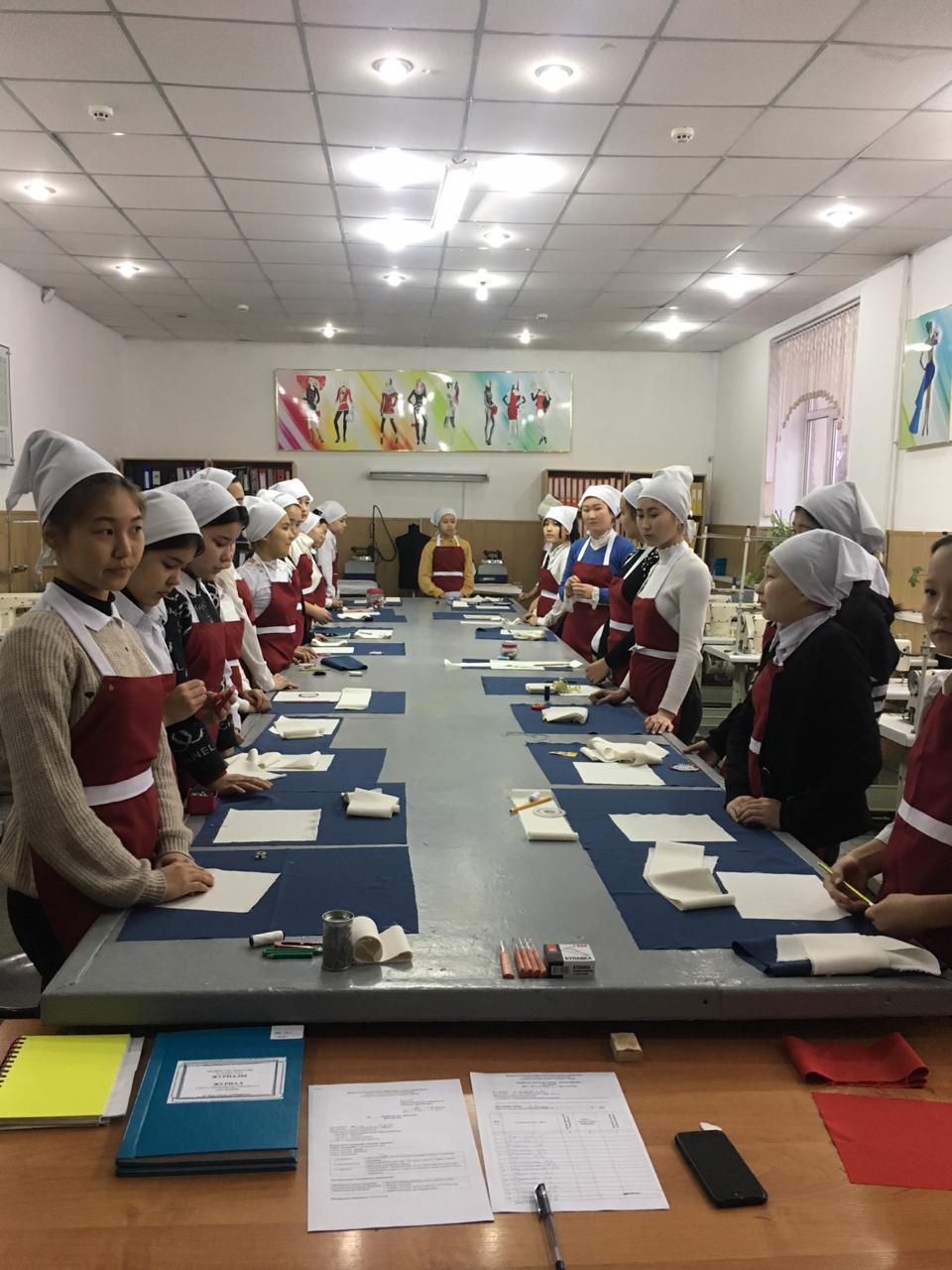
Қазақстан Республикасы Білім және ғылым министрлігі
Алматы қаласы Білім басқармасының
«Алматы сән және дизайн колледжі» КҚМК
Бекітемін
Директордың оқу-өндірістік ісі жөніндегі орынбасары
________________ Т. Кулешова
____ _____________ 20 ___ ж.
№______ өндірістік оқу сабақтары
ЖОСПАРЫ
Өту мерзімі: ___ ______________ 20___ жыл
Оқу бағамы __1_ оқу тобының №-і _МК19-7
Мамандық пен біліктіліктің коды
___121100 0 - Тігін өндірісі және киімді модельдеу
121110 2 – Пішуші
121107 2 – Сәнгер-пішуші
121108 3 –Модельер-конструктор
Бағдарлама тақырыбы: Сән ерекшелігіне қарай майда бөлшектерді өңдеу.
Сабақ тақырыбы: Рамкалы қалтаны өңдеу.
Сабақтың типі:_аралас __
Оқыту әдістері: практика
Сабақ мақсаттары:
| білімділік | Рамкалы қалтаны өңдеуді үйрету. |
| дамытушылық | Жауапкершілігін арттыру , ой-өрісін дамыту, дұрыс шешім қабылдау нәтижесіне баулу. |
| тәрбиелік | Еңбекке баулу. Мамандығана деген сүйіспеншілігін арттыру, жабдықтарды ұқыпты қарауды,тігіншілік өнерді дамыта білуге тәрбиелеу. |
Материалдық-техникалық жабдықтау:
| Жабдықтар, жұмыс формасы | Ине-жіп,оймақ,өлшеуіш таспа ,сызғыш, мата, тесьма, шілтер. |
| Студенттердің жұмыс формасы | Фартук косынка |
| Дидактикалық материал | Арнайы үлгілер, нұсқау картасы, коллекциялар жиынтығы және сән журналдары. |
Пәнаралық байланыс: Технология.
Өндірістік оқытудың негізгі кезеңдері мен оған бөлінетін уақыт
| Сабақтың құрылымы | Бөлінген уақыт көлемі |
| 1 | 2 |
| Ұйымдастыру кезеңі | 2 |
| Кіріспе нұсқаулық | 3 |
| Жаңа білімді бекіту | 45 |
| Ағымдық нұсқаулық | 20 |
| Қорытынды нұсқаулық | 4,35 |
| Үй тапсырмасы | 15 |
| Жұмыс орындарын жинау, тазалау | 2 |
Өндірістік оқытудың барысы
Ұйымдастыру кезеңі
журнал бойынша студенттерді түгендеу;
студенттердің сыртқы келбетін, киімдерін, сабққа дайындығын тексеру;
өндірістік оқытудың тақырыбын, мақсатын хабарлау.
Кіріспе нұсқаулық
Жаңа тақырыпты түсіндіру.
Тақырып бойынша студенттерге сұрақтар қою.
Тақырып бойынша сұрақтар: Не білеміз? Нені үйренгіміз келеді?
Машина жұмыстары кезіндегі техникалық қауіпсіздік ережелері?
Машиналық тігістер қандай жұмысты атқарады?
Машина мен көздің ара-қашықтығы?
Жаңа оқу материалдарын түсіндіру.
Қалта - киімнің құрамдас бөліктерінің бірі. Қалтаның жапсырма, жарма қалта, төс қалта, омырау қалта, ішкі қалта т. б. түрлері болады. Орналасуына қарай жапсырма қалта, төс қалта, омырау және жан қалта болып ажыратылады. Жапсырма қалталар қарапайым тік қалта, қиғаш қалта, қақпақты (клапанды) болып келеді де, олар әдіптелген тілікті, бүрмелі, оюлы және сырып тігіледі. Жапсырма қалталарды қақпағын ілгекті немесе ілгексіз, тік төртбұрышты немесе оюлы етіп жасайды. Жапсырма қалталарды бүрмелен, жиырыл, кестелеп әшекейлеп тігеді. Жоғарғы және жан қалталар түрлі формалы: тік немесе оюлы, тік немесе қақпақты т. б. түрі болады. Киімнің моделіне қарай жарма қалталарды кейде бүрменің немесе тігістің үстіне салады. Спорттық үлгідегі киімге көп жағдайда қалтаға сыдырма салынады. Қалтаны даярлағанда оның формасы мен тізілген матаның ерекшелігін технологиялық өңдеу тәсілдерін ескеру керек.
Жалпы қалтаны даярлағанда оның формасы мен матаның ерекшелігін, технологиялық өңдеу тәсілдерін ескеру керек. Мұндай қалтаны өңдну үшін мынандай бөлшектер қажет:негізгі материалдан немесе сәндік матадан пішілген екі әдіп;негізгі матадан пішілген бір қалта қапшығы (екі бөліктен тұруы да мүмкін), бір қалта бойлығы (қажетіне қарай). Қалтаның әдібі қапшығымен тұтас пішілуі мүмкін.

Қалтаның орны 5 сызықпен белгіленеді.Қалтаның орнын айқындайтын бір тіке сызықпен және екі көлденең сызық қалтаның өлшемін айқындайтынын дәлелдейді.Содан соң әрбір көмкерменің немесе рамканың екі еселенген еніне тең қашықтықта белгіленген орта сызықтан жоғары не төмен екі көмекші сызық жүргізеді.
Созылудан сақтау үшін негізгі бөлшектің теріс бетіне ені 4-5 қалта бойлығын салады немесе қазіргі заманда негізгі бөлшекті қатырмалайды.Қалтаның белгіленген сызығымен бойлықтың ортасы сәйкес келуі керек.
Жоғарғы жиегінің әдібін ортасынан бүгіп үтектеледі.Төменгі әдібі 1/3 үтектеледі.
Дайын болған әдіптердің бүктемелерін негізгі бөлшекке белгіленген көмекші сызықтарға дәлдеп, ал қиықтарынң жарма жағына келтіріп салады.Төменгі әдіпті қысқа жағын төмен қарай орналастырады.Жеке тапсырыс өңдірісінде әдіптің ұштары қалта өлшемін айқындайтын сызықтардың әрбір жағына 1,5-2 см шығып тұратындай етіп,алдын ала қосып көктейді.05-07 см ар қашықтықта қосып тігеді.Тігістер қалтаның өлшемін айқындайтын кесе көлденең сызықтар дәл келу керек.Әдіптің дұрыс қосып тігілгендігін негізгі бөлшектің теріс жағынан тексереді.Онда әдіпті қосып тігу тігістері параллель болып, қалталарда белгіленген кесе көлденең сызықтармен бір денгейде аяқталуы тиіс.
Қалта аузын теріс жағынан қалтаның ортасынан бастап екі жағынан бірдей тіледі.Қалта шеттерінен 1-1,5 см қашықтықта тігістердің ұштарынақарай көлбеу бағытта тіліктермен қырқады, 01-02 см жеткізбей.Қалта аузын арқылы, әдіпті теріс жағына айналдырады.
Әдіптің ұштарың оның жиектері түйісетіндей етіп тартып созады,Әдіптің шеттерін қиғаш көктейді.
Арнайы матамен оң жағынан бастыра үтектеу.
Қалтаның ұштарың бекіту. Әдіптің ұштарың оның жиектері түйісетіндей етіп тартып созады,қалта бұрыштарындғы тілді теріс бетінен негізгі бөлікке машиналық 2 тігіспен біріктіреді.
Көктеу тігісін суру.
Қалтаны арнайы матамен оң жағынан бастыра үтектеу.
Астардың үстінен көмкерме орналастырады қосып тігеді .,жоғарғы әдіпке қосып тігеді 0,7-1 см.
Төменгі әдіпке қалта астарын қосып тігу. Қалта астарын мен әдіпті оң жағымен беттестіріп қосып тігу.Тігіс ені 0,7-1 см.
Қалта астарын сырып тігу. Қалтаның астарын қалтаның бұрыштарын бекітіп және астардың бұрыштарын дөңгелете отырып үш жағынан сырып тігеді. Тігістің ені 1 см.Бұйым астарсыз болған жағдайда арнайы машинамен торлайды.
ЫЖЖ жүргізу. Дайын қалтаны сол жағынан, содан соң оң жағынан арнайы шүберекпен бастыра үтектеу.
Жаңа білімді бекіту
Қалта дегеніміз?
Қалтаның түрлері?
Оймалы қалта түрлері?
Рамкалы жарма қалта қандай бұйымдарда кездеседі?
Қалтаның орны қалай белгіленеді?
Өңделу жолдары?
Ағымдық нұсқаулық
Бірінші мақсатты іс-әрекет:
Жұмыс орынның ұйымдастырылуын тексеру.
Қауіпсіздік және еңбек қорғау ережелерінің сақталуын тексеру.
Студенттердің практикалық тапсырманы орындауға дайындығын тексеру.
Екінші мақсатты іс-әрекет:
Жұмыстың уақытылы орындалуын тексеру.
Жұмыстың әдіс-тәсілдері дұрыс орындалуын тексеру.
Жұмыстың сапалы орындалуын тексеру.
Үшінші мақсатты іс-әрекет:
Студенттермен жеке нұсқаулық жұмыстарын жүргізу.
Қорытынды нұсқаулық
Студенттердің орындаған жұмыстарына талдау жасау.
Әр студент жұмысының орындалу сапасын айту.
Өндірістік оқыту барысында жұмысын сапалы әрі уақытында орындаған студенттерді атап айту.
Әр студенттің жұмысындағы қателігін, кемшілігін жеке-жеке айту, талдау.
Үй тапсырмасы
Қалта түрлерінің схемасын сызып, өңделу бірізділігі бойынша орындау.
Жұмыс орнын жинау, тазалау.
Өндірістік оқыту шебері (толық аты-жөні, қолы)
_______ Айтубар Анель Асқарқызы_
Ministry of education and science of the Republic of Kazakhstan
Almaty College of fashion and design»
Department of education of Almaty city
Claim
Associate Director
on educational and production work
________________ T. Kuleshova
____ ____________ 2020 year
PLAN
industrial training classes No. 22
Date of the event: ___ ______________ 20___ year
Training course 1 no. MK19-7
Specialty code and name 1211000-Clothing manufacturing and modeling
qualifications 121108 3-Designer-designer
Program topic: RO 7 Module. To produce products according to types of difficulty. Process high-quality sewing products at the stage of their production.
Lesson topic: Topic 7.5. Process the Welt pocket into the frame .
Type of the lesson:combined.
Training method (s): explanatory,reproductive.
Techniques: visual, practical
The objectives of the class:
16) training - familiarize with the processing technology of the slotted pocket in the frame
17) developing-to form skills for processing the pocket; - to develop memory, thinking, imagination.
18) educational to Cultivate perseverance, to finish the business started to the end.
Material and technical equipment:
Equipment, tools and inventory Universal machine, fabric,
Students ' work uniform Apron, kerchief
Didactic material Instruction card,
Synopsis of an industrial training session Synopsis
Interdisciplinary connections: technology.
Course of the lesson Time (minutes)
Actions of the p\o wizard
Student actions Learning resources and materials
1 2 3 4 5
Organizational point 2-check the presence of students in the class on the magazine;
- check the appearance of students, readiness for the lesson;
- inform the subject and purpose of the training session. Attention is drawn to the master p/o. Magazine, pen.
Introductory instruction 33-repeat the completed training material:
Cut details Welt pocket with flap and one trim ?
Technological treatment of pocket?
What is a dolevik for?
- explain new training material Answer questions. Pocket samples.
Securing new training material 8 Asks questions
Details of the cut of the Welt pocket in the frame?
Technological treatment of pocket?
Answer questions. Technologists
cheska map.
The current instruction 5h 16) the First target bypass:
Check the organization of the workplace.
Verification of compliance with occupational safety and health measures.
Checking students ' readiness to perform a practical task.
17) the Second target bypass:
Checking the timely execution of works.
Checking the correctness of labor practices.
Checking the quality of students ' work.
18) the Third target bypass:
Individual instruction of students. Perform practical work and a single Welt pocket in the frame .
Technological map, samples of finished products.
The final briefing will allow you to analyze the work performed by students.
Report an assessment of the quality of each student's work.
Note the students who achieved the best results and quality of work performed during the period of industrial training.
Analyze the most common mistakes (shortcomings) in the work of each student. Show their work,
Analyze their work. Samples of completed works of students.
Homework 2 Sets your homework. Make notes in notebooks. Notebook, pen.
Cleaning jobs Controls cleaning in the sewing workshop
. Busy with cleaning jobs and a sewing workshop. Inventory for cleaning the sewing workshop.
The performance of students Perform practical work to implement the processing of slash pocket to the frame .
Self-assessment of the work of the master p\o: Practically explained the implementation of the slotted pocket in the frame .
Synopsis of an industrial training session
WELT POCKET IN THE FRAME: DO STEP BY STEP
A framed pocket is a Welt pocket. Experienced seamstresses are engaged in its production at clothing factories. But this does not mean that it is impossible to sew such a pocket yourself. After practicing and gaining experience, these pockets will turn out to be no worse than the factory ones. If you are ready to get to work and want to sew it right now, then our material on the topic "slotted pocket in a frame: video tutorials" will be very useful to you.
WHAT IS A WELT POCKET
Such pockets are found everywhere. They are used on all types of clothing, whether it is skirts, raincoats, jackets, jackets. They can be vertical, horizontal, or inclined. A variety of fabrics are used for their manufacture. The main nuance in the work is accuracy, so that the pocket is smooth. There are several ways to make slotted pockets, and therefore its processing. Welt pocket with flap, zip, framed and others. This article describes the pockets in a frame with the presented video lessons, so we will focus on two of them: a pocket in a complex frame and a simple one. Despite the different names and approaches to sewing, the result will be exactly the same. So that you understand what a slash pocket looks like, what kind of work you have to do, and soberly assess your strength, watch the video below, a step-by-step lesson.
WELT POCKET IN A SIMPLE FRAME
It is shown in the photo below:
We will need: a shelf as the main part of the pocket, the lower and upper obtachki, dolevik, valance and burlap pocket.
The initial stages for preparing for work and sewing look like this:
1.First, you need to mark the lines of entry to the pocket. In the second photo, line 1 defines the direction of the pocket, 2 and 3 limit its length, and 4 and 5 are auxiliary lines.
2.Next, you need to manually lay the lines on lines 2-5.
3.Paste the dolevik so that its middle coincides with the line 1 and the edges go 3-4 cm beyond the limiting lines (if the dolevik is not adhesive, then we outline it).
4.Fold the top obtachku in half face up and iron. The lower one is folded by a third of the width.
5.We outline the upper and lower obtachki.
6.Sew on the machine, both the piping, then remove the bone Tentorium.
7.Cut the pocket hole between the lines on the side of the dolevik.
8.Turn out the pocket and do the trimming with oblique stitches, fasten the edges of the pocket with the same stitches.
9.Sew one edge of the burlap to the bottom facing.
10.Sew the valance to the other edge of the burlap.
11.Ironing the seam pritochki burlap to the bottom facing.
12.Remove the extra threads of sharpening.
13.We iron the pocket from the inside out.
14.Bend the edge of the burlap with a valance and mark it.
15.Sew a valance on the side of the dolevik.
16.We correct the corners of the pockets, put the clips there.
Master of industrial training _________________________ _______ Aitubar Anel Askarovna_
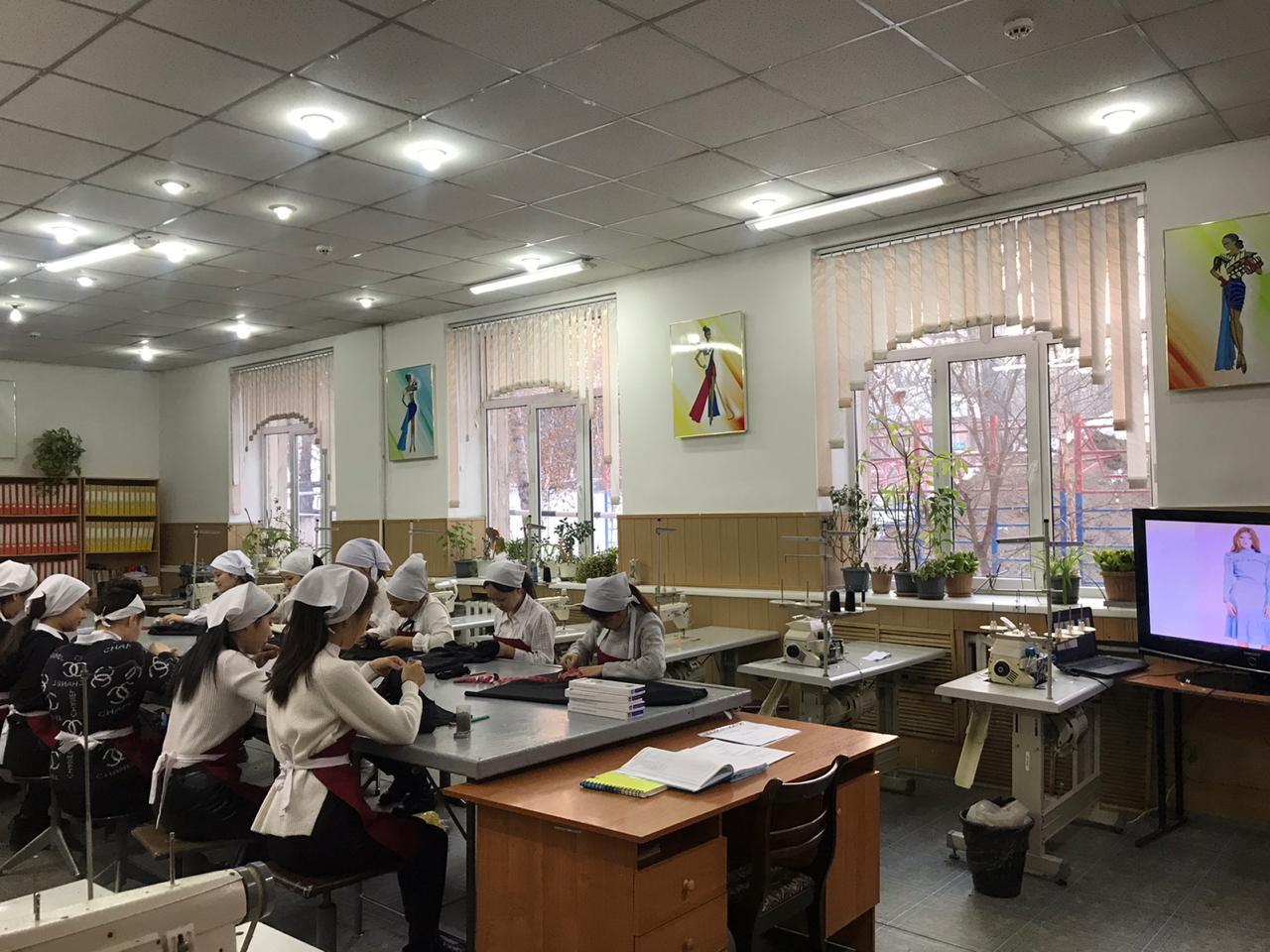
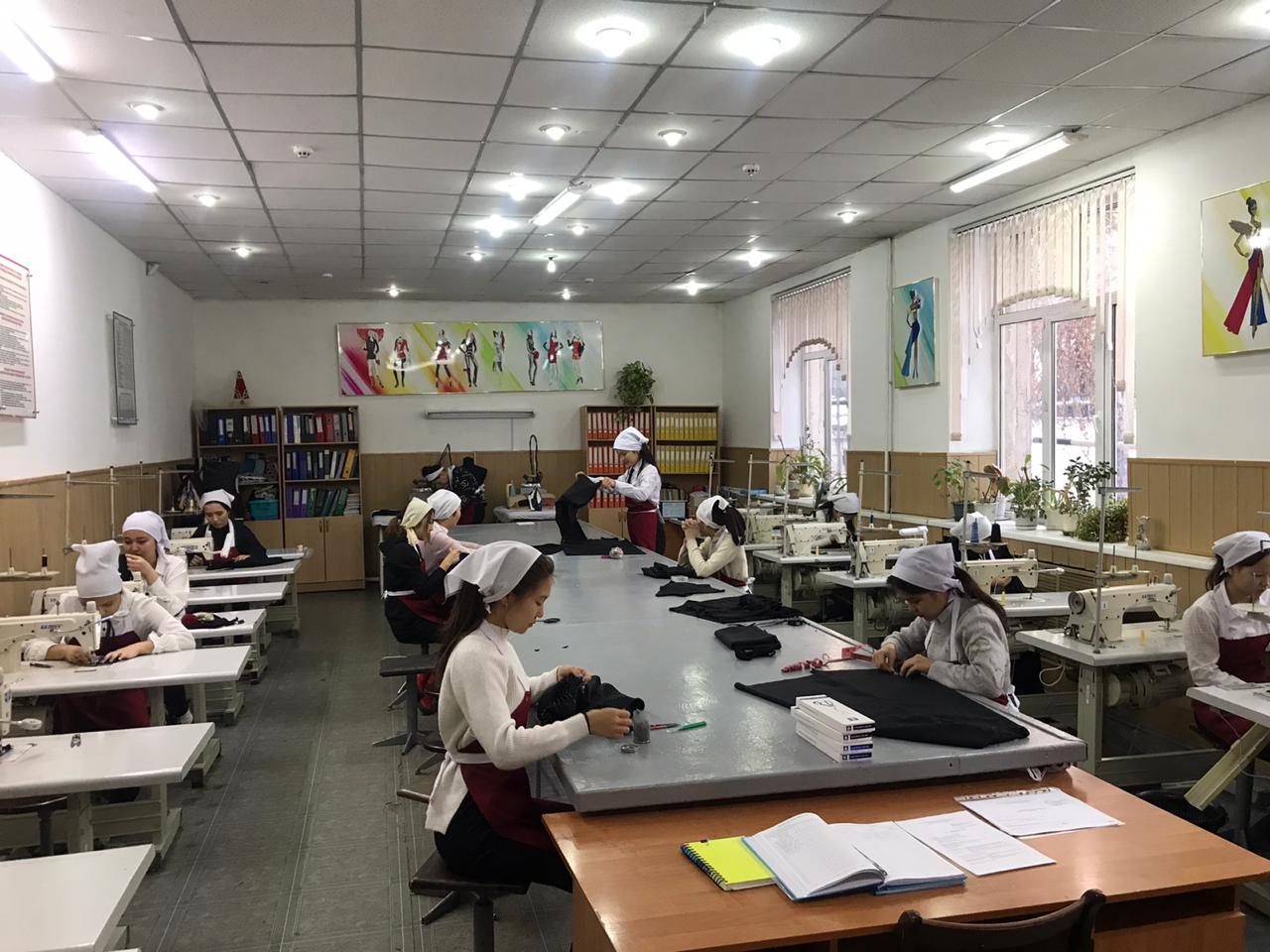
Қазақстан Республикасы Білім және ғылым министрлігі
Алматы қаласы Білім басқармасының
«Алматы сән және дизайн колледжі» КҚМК
Бекітемін
Директордың оқу-өндірістік ісі жөніндегі орынбасары
________________ Т. Кулешова
____ _____________ 20 ___ ж.
№______ өндірістік оқу сабақтары
ЖОСПАРЫ
Өту мерзімі: ___ ______________ 20___ жыл
Оқу бағамы __1_ оқу тобының №-і _МК19-7
Мамандық пен біліктіліктің коды
___121100 0 - Тігін өндірісі және киімді модельдеу
121110 2 – Пішуші
121107 2 – Сәнгер-пішуші
121108 3 –Модельер-конструктор
Бағдарлама тақырыбы: Сән ерекшелігіне қарай майда бөлшектерді өңдеу.
Сабақ тақырыбы: Екі әдіпті қақпақшалы қалтаны өңдеу.
Сабақтың типі:_аралас __
Оқыту әдістері: практика
Сабақ мақсаттары:
| білімділік | Екі әдіпті қақпақшалы қалтаны өңдеуді үйрету. |
| дамытушылық | Жауапкершілігін арттыру , ой-өрісін дамыту, дұрыс шешім қабылдау нәтижесіне баулу. |
| тәрбиелік | Еңбекке баулу. Мамандығана деген сүйіспеншілігін арттыру, жабдықтарды ұқыпты қарауды,тігіншілік өнерді дамыта білуге тәрбиелеу. |
Материалдық-техникалық жабдықтау:
| Жабдықтар, жұмыс формасы | Ине-жіп,оймақ,өлшеуіш таспа ,сызғыш, мата, тесьма, шілтер. |
| Студенттердің жұмыс формасы | Фартук косынка |
| Дидактикалық материал | Арнайы үлгілер, нұсқау картасы, коллекциялар жиынтығы және сән журналдары. |
Пәнаралық байланыс: Технология.
Өндірістік оқытудың негізгі кезеңдері мен оған бөлінетін уақыт
| Сабақтың құрылымы | Бөлінген уақыт көлемі |
| 1 | 2 |
| Ұйымдастыру кезеңі | 2 |
| Кіріспе нұсқаулық | 3 |
| Жаңа білімді бекіту | 45 |
| Ағымдық нұсқаулық | 20 |
| Қорытынды нұсқаулық | 4,35 |
| Үй тапсырмасы | 15 |
| Жұмыс орындарын жинау, тазалау | 2 |
Өндірістік оқытудың барысы
Ұйымдастыру кезеңі
журнал бойынша студенттерді түгендеу;
студенттердің сыртқы келбетін, киімдерін, сабққа дайындығын тексеру;
өндірістік оқытудың тақырыбын, мақсатын хабарлау.
Кіріспе нұсқаулық
Жаңа тақырыпты түсіндіру.
Тақырып бойынша студенттерге сұрақтар қою.
Тақырып бойынша сұрақтар: Не білеміз? Нені үйренгіміз келеді?
Машина жұмыстары кезіндегі техникалық қауіпсіздік ережелері?
Машиналық тігістер қандай жұмысты атқарады?
Машина мен көздің ара-қашықтығы?
Жаңа оқу материалдарын түсіндіру.
Қалта - киімнің құрамдас бөліктерінің бірі. Қалтаның жапсырма, жарма қалта, төс қалта, омырау қалта, ішкі қалта т. б. түрлері болады. Орналасуына қарай жапсырма қалта, төс қалта, омырау және жан қалта болып ажыратылады. Жапсырма қалталар қарапайым тік қалта, қиғаш қалта, қақпақты (клапанды) болып келеді де, олар әдіптелген тілікті, бүрмелі, оюлы және сырып тігіледі. Жапсырма қалталарды қақпағын ілгекті немесе ілгексіз, тік төртбұрышты немесе оюлы етіп жасайды. Жапсырма қалталарды бүрмелен, жиырыл, кестелеп әшекейлеп тігеді. Жоғарғы және жан қалталар түрлі формалы: тік немесе оюлы, тік немесе қақпақты т. б. түрі болады. Киімнің моделіне қарай жарма қалталарды кейде бүрменің немесе тігістің үстіне салады. Спорттық үлгідегі киімге көп жағдайда қалтаға сыдырма салынады. Қалтаны даярлағанда оның формасы мен тізілген матаның ерекшелігін технологиялық өңдеу тәсілдерін ескеру керек.
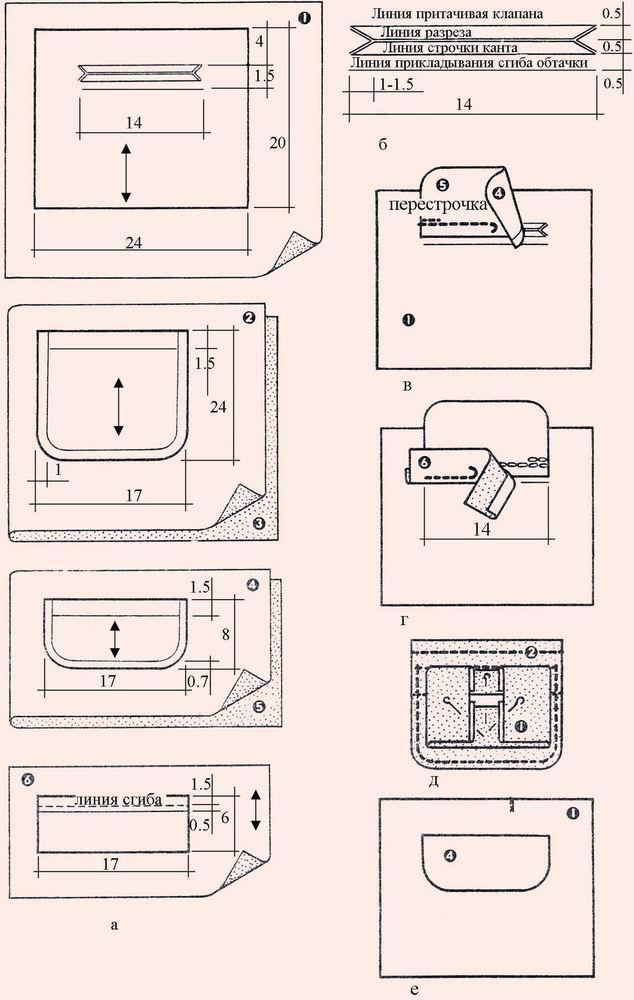
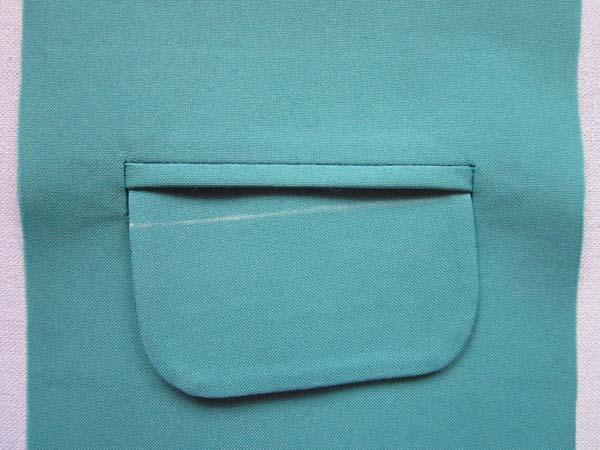
Жалпы қалтаны даярлағанда оның формасы мен матаның ерекшелігін, технологиялық өңдеу тәсілдерін ескеру керек. Мұндай қалтаны өңдну үшін мынандай бөлшектер қажет:негізгі материалдан немесе сәндік матадан пішілген екі әдіп;негізгі матадан пішілген бір қалта қапшығы (екі бөліктен тұруы да мүмкін), бір қалта бойлығы (қажетіне қарай). Қалтаның әдібі қапшығымен тұтас пішілуі мүмкін.
Жаңа білімді бекіту
Қалта дегеніміз?
Қалтаның түрлері?
Ағымдық нұсқаулық
Бірінші мақсатты іс-әрекет:
Жұмыс орынның ұйымдастырылуын тексеру.
Қауіпсіздік және еңбек қорғау ережелерінің сақталуын тексеру.
Студенттердің практикалық тапсырманы орындауға дайындығын тексеру.
Екінші мақсатты іс-әрекет:
Жұмыстың уақытылы орындалуын тексеру.
Жұмыстың әдіс-тәсілдері дұрыс орындалуын тексеру.
Жұмыстың сапалы орындалуын тексеру.
Үшінші мақсатты іс-әрекет:
Студенттермен жеке нұсқаулық жұмыстарын жүргізу.
Қорытынды нұсқаулық
Студенттердің орындаған жұмыстарына талдау жасау.
Әр студент жұмысының орындалу сапасын айту.
Өндірістік оқыту барысында жұмысын сапалы әрі уақытында орындаған студенттерді атап айту.
Әр студенттің жұмысындағы қателігін, кемшілігін жеке-жеке айту, талдау.
Үй тапсырмасы
Иініш түрлерін жаттап, өңлу бірізділігі бойынша өңдеу.
Жұмыс орнын жинау, тазалау.
Өндірістік оқыту шебері (толық аты-жөні, қолы)
_______ Айтубар Анель Асқарқызы_
Ministry of education and science of the Republic of Kazakhstan
Almaty College of fashion and design»
Department of education of Almaty city
Claim
Associate Director
on educational and production work
________________ T. Kuleshova
____ ____________ 2020 year
PLAN
classes in industrial training no. 23
Date of the event: ___ ______________ 20___ year
Training course 1 no. MK19-7
Specialty code and name 1211000-Clothing manufacturing and modeling
qualifications 121108 3-Designer-designer
Program topic: RO 7 Module. To produce products according to types of difficulty. Process high-quality sewing products at the stage of their production.
Lesson theme: the Theme of 7.6. Handle pocket with flap and two obrazkami .
Type of the lesson:combined.
Training method (s): explanatory,reproductive.
Techniques: practical,verbal,visual.
The objectives of the class:
22) training to Learn how to process a slotted pocket with a valve and two obtachkami and the sequence of processing.
23) developing to promote the development of the ability and skills to handle the slash pocket and the sequence of processing
Promote the development of cognitive activity, independence and self-control skills.
24) educational help to foster patience, accuracy in work, integrity, mutual respect and a culture of communication
Material and technical equipment:
Equipment, tools and inventory Universal machine, scissors, thread, ruler, fabric, interlining, hand needle.
Students ' work uniform Apron, kerchief
Didactic material Instruction card,
Synopsis of an industrial training session Synopsis
Interdisciplinary connections: technology, history.
Course of the lesson Time (minutes)
Actions of the p\o wizard
Student actions Learning resources and materials
1 2 3 4 5
Organizational point 2-check the presence of students in the class on the magazine;
- check the appearance of students, readiness for the lesson;
- inform the subject and purpose of the training session. Attention is drawn to the master p/o. Magazine, pen.
Introductory instruction 33-repeat the completed training material:
Details of the cut of the Welt pocket in the frame?
Technological treatment of pocket?
- explain new training material Answer questions. Instructional and technological
sky map.
Securing new training material 8 Asks questions
Details of the cut of the pocket with a flap and two obtachkami?
Technologic processing?
Answer questions. Instruction
but-technological maps
The current instruction 5h 22) the First target bypass:
Check the organization of the workplace.
Verification of compliance with occupational safety and health measures.
Checking students ' readiness to perform a practical task.
23) the Second target bypass:
Checking the timely execution of works.
Checking the correctness of labor practices.
Checking the quality of students ' work.
24) the Third target bypass:
Individual instruction of students. Perform practical work to implement flap pockets and two obrazkami .
Instruction
but-technological maps.
The final briefing will allow you to analyze the work performed by students.
Report an assessment of the quality of each student's work.
Note the students who achieved the best results and quality of work performed during the period of industrial training.
Analyze the most common mistakes (shortcomings) in the work of each student. Show their completed work. Work of students.
Magazine, pen.
Homework 2 Sets your homework. Make notes in notebooks. Notebook, pen.
Cleaning jobs Controls the cleaning of the sewing workshop. Busy with cleaning jobs and a sewing workshop. Inventory for cleaning the sewing workshop.
The performance of students: Complied with flap pocket and two obrazkami .
Self-assessment of the work of the master p\o: Clearly showed the processing of the pocket with a valve and two obtachkami.
Synopsis of an industrial training session
Graphic diagram of pocket processing
History of the origin of pockets
The history of the pocket can not be called ancient - it appeared only in the last third of the XVII century.
For many years, scientific circles have been arguing about the appearance of such an arch-useful invention as a pocket in the material and everyday culture of modern humanity. Historians, archaeologists, fashion designers, all had their own opinions, believing it to be the only correct one. However, recent research by a group of Israeli scientists has produced a sensational revolution in our views on this issue.
Turning to history, we can say that until now there were two main camps of researchers who adhere to diametrically opposite ideas. One group claimed that pockets were invented by the ancestors of modern man —the carmagnons, in ancient times. It is the presence of pockets on their clothes that they differed from the Neanderthals, for which they were brutally exterminated. The idea of pockets was forgotten for a long time, but it lived in the form of secret knowledge for many centuries.
The second large group attributed the honor of the invention of pockets to the Italian rebels — karmanariyam, allegedly nicknamed so for the huge pockets that were sewn on clothing for carrying ammunition, . Of course, there were still many different marginal ideas about the origin of the pocket, for example, many attributed its invention to Leonardo da Vinci, but only that it was not attributed to him?
A sensational statement made by the Israeli scientists have produced the effect of bombs. "Pockets, in the form to which we are accustomed, were invented by the Jewish tailor Benya Karman, who lived in the city of Kiryat Shmona," they say.
"There is irrefutable evidence in the form of records, reports, and various documents. We found drawings of the first models of pockets made by the hand of a genius tailor" - says the head of the researchers, Dr. Michelson.
So, how did the pocket appear? What political and economic forces were behind this epoch-making invention?
It turns out that the tailor received a secret order for the development of "keshene" (which is how the pocket is called in Yiddish) from the Israeli government. In the pre-pocket era, cash was carried in purses suspended from a belt or in Fanny packs. This contributed to rampant crime, an increase in the number of crimes against property, and created an unhealthy and nervous atmosphere in the markets, since it was not difficult to steal such a purse in a crowd.
After receiving a government grant, the tailor got down to business. The surviving drawings show that the first models of pockets were significantly different from the modern type. In particular, they were inverted. This pocket was sewn on the clothes over the wallet. This of course caused some inconvenience to the thieves, but it could not solve the problem at the root. The breakthrough occurred when Karman came up with the next solution, which was ingenious in its simplicity. Taking the empty purse, the tailor sewed it from the inside of the garment, making a small hole in it for the hand. Thus, by putting his hand in the purse, a person could be sure that his property was safe and sound.
This was a landmark event. In addition to a sharp decrease in the number of thefts, the invention of the Pocket produced several unexpected effects. For example, it turned out that the owner of the pocket is able to quickly produce commodity and money transactions, which contributed to the growth of the economy, and Jewish merchants in the number of transactions firmly occupied a leading place in the European and Asian markets.
All this brought the people of Israel many years of prosperity and prosperity, and gave us an integral attribute of modern fashion design, a pocket
The first item of clothing that had pockets was the coat of Louis XIV. until that moment, coins and necessary small items were carried in hanging pockets-bags. They were not sewn into clothing, but were worn mostly in pairs on a thin belt for women under the skirt, and for men over the pants. To access the pockets, special slits were left in the seams of the outer clothing. In Burgundy the yard, these bags have been part of the court toilet and was called "aumoniere".
In the XV-XVI centuries, pockets were an independent accessory of women's costume. They were usually made of white linen, like all other linen. But unlike petticoats and shirts, they were much more often decorated with embroidery with colored silk or decorative stitch. Sometimes not only linen or cotton was used for pockets, but also more expensive fabrics - velvet, satin. However, the pockets were rarely sewn entirely from them - as in the case of embroidery, silk fabrics were usually decorated only on the outside.
After the appearance of pockets, men began to settle for them, and women began to develop a handbag line. They carried small bags-bags designed to hold small items. Even then, these reticule bags were made of different materials, had different shapes and were richly decorated with beads and glass beads.
In the XVIII century, there were handbags made of velvet and lace, which contained handkerchiefs, cosmetics and other small things. They were called "Pompadour" in memory of the favorite of the French king Louis XV.
At the beginning of the XIX century, pockets everywhere began to sew into clothing. Hinged pockets have been preserved in everyday use as a detail of a child's or work dress. Also, hinged pockets continued to be used by ladies of respectable age, who prefer not to change their habits.
At the beginning of the XX century, Coco Chanel was considered the main fan of pockets. She believed that women don't have pockets, this men's costume items. And brought them not only to clothes, but also to accessories.
Today, pockets are so everyday wardrobe items that it seems-they have always been.
There are a lot of interesting facts about pockets.
Master of industrial training _________________________ _______ Aitubar Anel Askarovna_
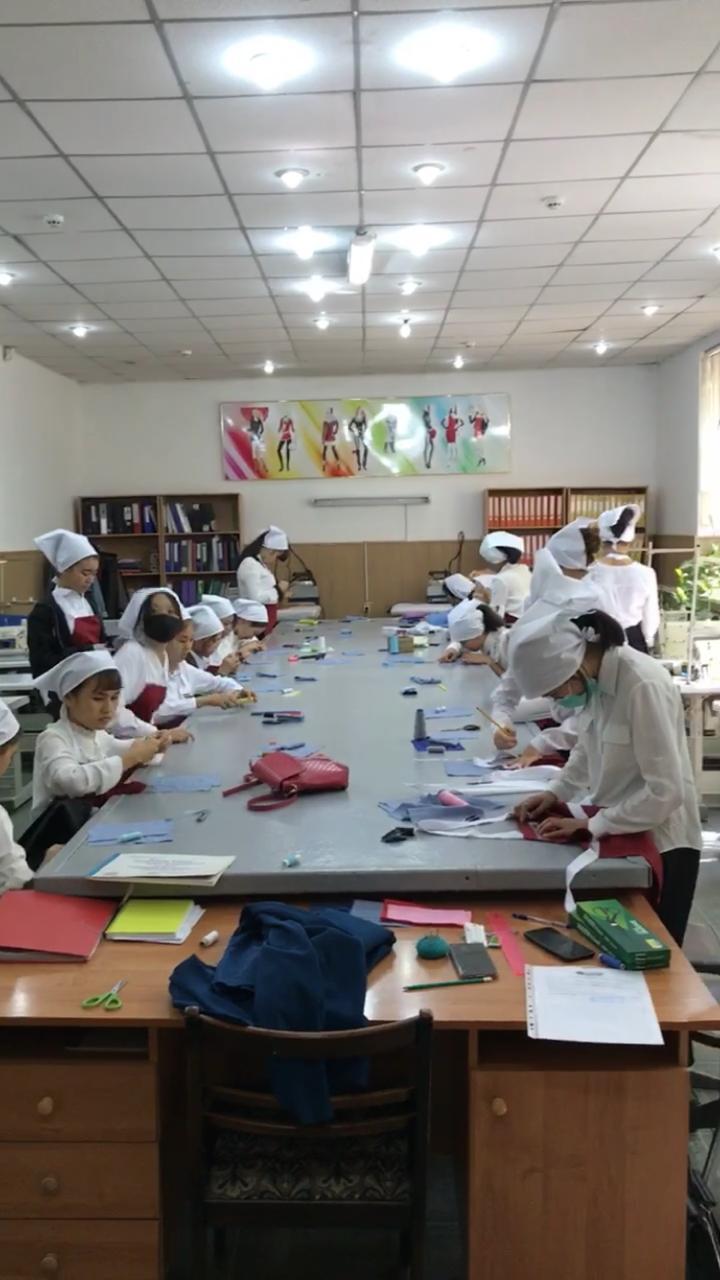
Қазақстан Республикасы Білім және ғылым министрлігі
Алматы қаласы Білім басқармасының
«Алматы сән және дизайн колледжі» КҚМК
Бекітемін
Директордың оқу-өндірістік ісі жөніндегі орынбасары
________________ Т. Кулешова
____ _____________ 20 ___ ж.
№______ өндірістік оқу сабақтары
ЖОСПАРЫ
Өту мерзімі: ___ ______________ 20___ жыл
Оқу бағамы __1_ оқу тобының №-і _МК19-7
Мамандық пен біліктіліктің коды
___121100 0 - Тігін өндірісі және киімді модельдеу
121110 2 – Пішуші
121107 2 – Сәнгер-пішуші
121108 3 –Модельер-конструктор
Бағдарлама тақырыбы: Сән ерекшелігіне қарай майда бөлшектерді өңдеу.
Сабақ тақырыбы: Ұштары қондырылған жапырақшалы қалтаны өңдеу.
Сабақтың типі:_аралас __
Оқыту әдістері: практика
Сабақ мақсаттары:
| білімділік | Ұштары қондырылған жапырақшалы қалтаны өңдеуді үйрету. |
| дамытушылық | Жауапкершілігін арттыру , ой-өрісін дамыту, дұрыс шешім қабылдау нәтижесіне баулу. |
| тәрбиелік | Еңбекке баулу. Мамандығана деген сүйіспеншілігін арттыру, жабдықтарды ұқыпты қарауды,тігіншілік өнерді дамыта білуге тәрбиелеу. |
Материалдық-техникалық жабдықтау:
| Жабдықтар, жұмыс формасы | Ине-жіп,оймақ,өлшеуіш таспа ,сызғыш, мата, тесьма, шілтер. |
| Студенттердің жұмыс формасы | Фартук косынка |
| Дидактикалық материал | Арнайы үлгілер, нұсқау картасы, коллекциялар жиынтығы және сән журналдары. |
Пәнаралық байланыс: Технология.
Өндірістік оқытудың негізгі кезеңдері мен оған бөлінетін уақыт
| Сабақтың құрылымы | Бөлінген уақыт көлемі |
| 1 | 2 |
| Ұйымдастыру кезеңі | 2 |
| Кіріспе нұсқаулық | 3 |
| Жаңа білімді бекіту | 45 |
| Ағымдық нұсқаулық | 20 |
| Қорытынды нұсқаулық | 4,35 |
| Үй тапсырмасы | 15 |
| Жұмыс орындарын жинау, тазалау | 2 |
Өндірістік оқытудың барысы
Ұйымдастыру кезеңі
журнал бойынша студенттерді түгендеу;
студенттердің сыртқы келбетін, киімдерін, сабққа дайындығын тексеру;
өндірістік оқытудың тақырыбын, мақсатын хабарлау.
Кіріспе нұсқаулық
Жаңа тақырыпты түсіндіру.
Тақырып бойынша студенттерге сұрақтар қою.
Тақырып бойынша сұрақтар: Не білеміз? Нені үйренгіміз келеді?
Машина жұмыстары кезіндегі техникалық қауіпсіздік ережелері?
Машиналық тігістер қандай жұмысты атқарады?
Машина мен көздің ара-қашықтығы?
Жаңа оқу материалдарын түсіндіру.
Қалта - киімнің құрамдас бөліктерінің бірі. Қалтаның жапсырма, жарма қалта, төс қалта, омырау қалта, ішкі қалта т. б. түрлері болады. Орналасуына қарай жапсырма қалта, төс қалта, омырау және жан қалта болып ажыратылады. Жапсырма қалталар қарапайым тік қалта, қиғаш қалта, қақпақты (клапанды) болып келеді де, олар әдіптелген тілікті, бүрмелі, оюлы және сырып тігіледі. Жапсырма қалталарды қақпағын ілгекті немесе ілгексіз, тік төртбұрышты немесе оюлы етіп жасайды. Жапсырма қалталарды бүрмелен, жиырыл, кестелеп әшекейлеп тігеді. Жоғарғы және жан қалталар түрлі формалы: тік немесе оюлы, тік немесе қақпақты т. б. түрі болады. Киімнің моделіне қарай жарма қалталарды кейде бүрменің немесе тігістің үстіне салады. Спорттық үлгідегі киімге көп жағдайда қалтаға сыдырма салынады. Қалтаны даярлағанда оның формасы мен тізілген матаның ерекшелігін технологиялық өңдеу тәсілдерін ескеру керек.
Жапырақшасы бар ойма қалтаны өңдеу. Мұндай қалтаны өңдеу үшін келесі бөліктер қажет: негізгі материалдан немесе сәндік матадан жапырақша – біреу, негізгі материалдан қалта астары – біреу, мақта матасынан бөлік – біреу.
Дайын жапырақшаға оның негізгі бөлікке сырып тігілетін сызығын белгілейді және онымен дайын түріндегі жапырақшының енін дәлелдейді.Негізгі бөлікте көмекші текало бойынша қалтаның орналасу орнын қалтаның бағытын анықтайтын және бір мезгілде жапырақшаны сырып тігу сызығы болып табылатын бір бөліктің және қалтаның өлшемін анықтайтын екі көлденең үш сызықпен дәлңелдейді.Жеңіл созылатын мата бұйымдарында теріс жағынан қалта сызығынын астына қимасының 0,5 см қашықтықта екі бойлық тігіспен белдітің үлкен бөлігі ені бойынша дайын түріндегі жапырақша жағына орналасатындай етіп және жапырақшаның сырып тіккен тігісінен ені бойынша 1 см төмен көктеп тігеді.
Сөйтіп осылай қосылған жапырақшаны және қалта астырының бір бөлігін негізгі бөлікке келтіреді,жапырақшадағы және негізгі бөліктегі белгіленген сызықтарды сәйкестендіреді, тігісті сырып тіккен тігістен 0,1 см қашықтықта орналастырып көктейді және сырып тігеді.мнда жапырақша негізгі бөліктен және қалта астарының арасында болуға тиіс Тігісті қалтаны белгілеудің көлденең сызықтарында аяқтайды. Жаппай өндірісте жапырақшаны оң жағын астына қаратып негізгі бөліктің оң жағына, жапырақшадағы және негізгі бөліктегі сызықтарды сәйкестендіріп қималарынмен қалта оймасына қарай келтіреді.Жапырықшаға қалта астырының бір бөлігін теріс жағын жоғары қаратып келтіреді және қималарын теңестіріп, астырымен жапырақшаны бір тігіспен сырып тігеді.
Жапырақша мен астырдың сырып тігілген тігісін жапырақшаны бір тігісін жапырақша жағына қарай жатқызады. Астардың екінші бөлігін оң жағын астына қаратып негізгі бөліктің оң жағына жапыраұшанын сырып тіккен тігісіне жапсарластырып келеді. Қалта вертикаль орналасқан жағдайда астардың үстіңгі жиегіне қатысты 1,5 см шығарып көктейді, ал одан кейін жапырақшаның сырып тіккен тігісінен 0,8-1 см қашықтықта сырып тігеді.
Жапырақша вертикаль орналасқан жағдайда тігісті жапырақшаның сүйір жиегінде жапырақшаның негізгі бөлікке сырып тігілген тігіс ұшынан 03-0,5 см жоғары, ал доғал жиегінде ұштарының қиғаштығына байланысты жапырақшаны сырып тіккен тігістің ұшымен бір деңгейде немесе 0,2-0,3 см жоғары аяқтайды.
Жапырақшаларының жиектері тік болатын қалталарда, тігістерді жапырақшаны сырып тіккен ұштарымен бір деңгейде аяқтайды. Бұдан кейін қапшықты жапырақша жағына қарай бүктейді және беріктік үшін кейде сырып тіккен тігістен 0,1-0,2 см қашықтықта тігеді. Жапырақша мен қлта астарының сіріп тігілуінің дұрыстығын тексергенен кейін негізгі бөлікті ортасынан бастап және тігістердің аяғына дейін 1,-1,5 см жеткізбей тігімтерінің арасынан теріс жағынан қиып кеседі, оларды тегіс жиектерінен 0,1-1,2 см қашықтықта аяқтайды. Егер қалтаның бір жиегі қосатын тігіске енсе, онда бөлікті қимасынан бастап кеседі. Алынған саңылау арқылы астарын бұйымның теріс жағына айналдырады, жапырақшаны оның дайын түріндегі орналасқан жағына қарай бүктейді. Жеке тапсырыстар бойынша орындалған кезде жапырақшаны сырып тігілген теріс тігісін жүн мата бұйымдарында көктеп шығады. Жібек жүн маталары және құрамында синтетикалық талшықтары бар мата бұйымдарында жапырақшаны негізгі бөлікке ортасыннан бір тігіспен қолмен қабып көктейді және үтіктейді.
Жаппай өндірісте қалта астырын өңін алдырғаннан кейін қалта жиектері теріс жағынан қос кері тігіспен бекітеді, бір мезгілде бұоыштарныдағы тігісті дөңгелектетіп астарын қиып тігеді. Астарды қайып тіккен тігіндісінің ені 1-1,5 см. Қалта астарын қималарының арнайы машинамен көктеп тігеді. Жапырақшаның ұштарын үлгісіне байланысты қайып тігетін машинамен қайып тігеді немесе қолмен жабық қабумен тігеді. Егер жапырақша ұштарын біреуі қомпа тігіске енетін болса, жапыпақшаның өнделмеген ұшын тарта түседі және негізгі бөлікке қалта астырын қайып тігумен бір мезгілде бекітеді
Жаңа білімді бекіту
Қалта дегеніміз?
Қалтаның түрлері?
Қима қалта түрлері?
Екі әдіпті қақпақшалы қалтаның өңделу бірізділігі?
Ағымдық нұсқаулық
Бірінші мақсатты іс-әрекет:
Жұмыс орынның ұйымдастырылуын тексеру.
Қауіпсіздік және еңбек қорғау ережелерінің сақталуын тексеру.
Студенттердің практикалық тапсырманы орындауға дайындығын тексеру.
Екінші мақсатты іс-әрекет:
Жұмыстың уақытылы орындалуын тексеру.
Жұмыстың әдіс-тәсілдері дұрыс орындалуын тексеру.
Жұмыстың сапалы орындалуын тексеру.
Үшінші мақсатты іс-әрекет:
Студенттермен жеке нұсқаулық жұмыстарын жүргізу.
Қорытынды нұсқаулық
Студенттердің орындаған жұмыстарына талдау жасау.
Әр студент жұмысының орындалу сапасын айту.
Өндірістік оқыту барысында жұмысын сапалы әрі уақытында орындаған студенттерді атап айту.
Әр студенттің жұмысындағы қателігін, кемшілігін жеке-жеке айту, талдау.
Үй тапсырмасы
Қалта түрлерін орындау.
Жұмыс орнын жинау, тазалау.
Өндірістік оқыту шебері (толық аты-жөні, қолы)
_______ Айтубар Анель Асқарқызы_
Ministry of Education and science of the Republic of Kazakhstan
Department of education of Almaty city
Almaty College of fashion and design»
Claim
Associate Director
on educational and production work
________________ T. Kuleshova
____ ____________ 2020 year
PLAN
classes in industrial training no. 23
Date of the event: ___ ______________ 20___ year
Training course _ _ group 1 no. _ _ _ _ _ _ _ _ _ _ _
Specialty and qualification code
__1111100 0-clothing manufacturing and modeling
121110 2-cutter
121107 2-fashion designer-cutter
121108 3-Fashion designer
Theme of the program: processing of small details depending on the specifics of Fashion.
The theme of the lesson: sheet metal pocket with tips.
Lesson type:arales __
Training methods: practice
Lesson goals:
10) teach the processing of a leaf pocket with the set ends of the formation.
11) increase of developing responsibility , development of Outlook, familiarization with the results of making correct decisions.
12) educational and Labor training. To cultivate a love of the profession, a careful attitude to equipment, and the ability to develop sewing.
Material and technical equipment:
Equipment, working form needle-thread, thread, measuring tape, ruler, fabric, braid, lace.
Form of work of students Apron kerchief
Didactic material-special templates, instructional maps, collections and fashion magazines.
Intersubject communication: Technology.
Main stages of industrial training and time of its allocation
Lesson structure the amount of time allotted
1 2
22. organizational stage 2
23. introductory guide 3
24. consolidation of new knowledge 45
25. current instruction 20
26. final instruction 4.35
27. homework 15
28. cleaning, cleaning jobs 2
Course of industrial training
15) organizational stage
14) inventory of students according to the journal;
15) checking the appearance, clothing, and readiness of students for soap work;
16) tell the topic, the purpose of industrial training.
16) introductory instructions
7) explanation of the new topic.
Ask students questions about the topic.
Related questions: What do we know? Grengs what you want?
Safety rules when operating machines?
What kind of work does machine seams do
Meaning between the machine and the eye?
8) explanation of new training materials.
A pocket is one of the components of clothing. Pockets have types of patches, krupyanyh pockets, chest pockets, chest pockets, internal pockets, etc. depending on the location of the patch are separated by pockets, chest pockets, chest and side pockets. Patch pockets are conventional vertical pockets, oblique pockets, covers (flaps) that are sewn with rifled, corrugated, ornamental and paint. Patch pockets make the cover on hooks or without hooks, rectangles or ornaments. Patch pockets are made with a corrugated, stylish, embroidery decoration. The upper and side pockets have different shapes: straight or ornamental, straight or with a lid, etc. depending on the model of clothing, grain pockets are sometimes placed on seams or seams. In most cases, sports-style clothing is placed in a pocket zipper. When making a pocket, you should take into account the ways of technological processing of its shape and the specifics of the kneaded fabric.
There is a processing of threaded folders with leaves. To handle such a pocket requires the following parts: leaves from the main material or decorative fabric – one pocket reference forms One part of cotton fabric-one.
On the finished cake, mark the line that it is sewn on the main part, and with it prove the width of the leaves in the finished form.In the main part of the auxiliary section, the location of the pocket is specified by two horizontal three lines that determine the direction of the pocket and determine the size of one part and the pocket, which is simultaneously the line of crossing leaves.In products of light stretching on the negative side under the pocket line at a distance of 0.5 cm from the section with two longitudinal seams, most of the belt is located in the width towards the leaves of the finished type and cut the leaves. sew on the width of 1 cm below the sewn seam.
Thus, the added leaf and part of the pocket lining are brought to the main part, identify the marked lines on the leaves and in the main part, sow and sew, placing the seam at a distance of 0.1 cm from the vertical seam.on the MND, the leaves complete the seam pocket on the horizontal lines of the marking, which should be located between the main part and the lining of the pocket. In mass production, the leaves are brought to the right side of the main part, the lines on the leaves and the main part towards the pocket depression with cuts.To the leaves, part of the pocket lining is applied on top of the negative side and align the cuts, enclose the petal with one seam.
The sewn seam of leaves and linings is applied one seam to the side of the leaf. The second part of the lining is applied to the seam, which is attached to the right edge of the main part, inverted leaf. If the pocket is vertical, pull it out 1.5 cm from the top edge of the lining, and then turn it over at a distance of 0.8-1 cm from the edges of the leaves.
If the leaves are positioned vertically, the seam is finished at the same level as the end of the seam with the edge of the leaves, depending on the inclination of the leaf ends, or 0.2-0.3 cm above the end of the seam with the edge of the leaves, depending on the inclination of the leaf ends.
On pockets with vertical leaf edges, the seams finish at the same level as the leaf edges. After that, the bag is folded to the side of the leaves and sewn at a distance of 0.1-0.2 cm from the seams, sometimes sewn for strength. After checking the correct bending of the linings and leaves, the main part is cut at a distance of 0.1-1.2 cm from the middle and to the end of the seams, without bringing the end of the seams to 1, -1.5 cm, cut between the seams on the negative side, finish them at a distance of 0.1-1.2 cm from the flat edges. If one edge of the pocket is included in the connecting seam, the cut-off is cut from the section. Through the resulting gap, the lining is turned over to the negative side of the product, and the cake is folded in the direction of its location in the finished form. When performing individual orders, the negative seam, sewn with a flat cake, is rotated on woolen products. On silk wool fabrics and fabric products containing synthetic fibers, the cake is poured out and ironed by hand from the center to the main part with a single seam.
In mass production, after purging the pocket lining, the edges of the pockets are fixed on the negative side with two reverse seams, at the same time the seam is sewn in the buysh, rounding the lining. The width of the seam with a rolling pads, 1-1. 5 cm Lining pocket seams sew special machine. Leaf tips, depending on the type, are sewn with a sewing machine or sewn manually with a closed layer. If the leaf tips are included in the suture, tighten the raw end tighten and fasten at the same time as the pocket lining is stitched onto the main part
Consolidation of new knowledge
What is a pocket?
Types of folders?
Types of pocket sections?
Processing sequence of a pocket with two allowance valves?
17) the current instruction
10) first target activity:
Check the organization of the workplace.
Checking compliance with safety and health regulations.
Checking students ' readiness to perform practical tasks.
11) the second target operation:
Checking the timely execution of works.
Works, methods, and techniques for performing the check correctly.
Checking the quality of work.
12) the third target activity:
Conducting individual instructional work with students.
18) final instructions
Analysis of students ' performance.
Tell us about the quality of each student's work.
To mark students who performed their work in a high-quality and timely manner in the process of industrial training.
Speak separately, analyze errors and shortcomings in the work of each student.
19) homework
Performing types of pockets.
20) cleaning, workplace cleaning.
Master of industrial training (full Name, signature)
_______ Aitubar Anel Askarovna_
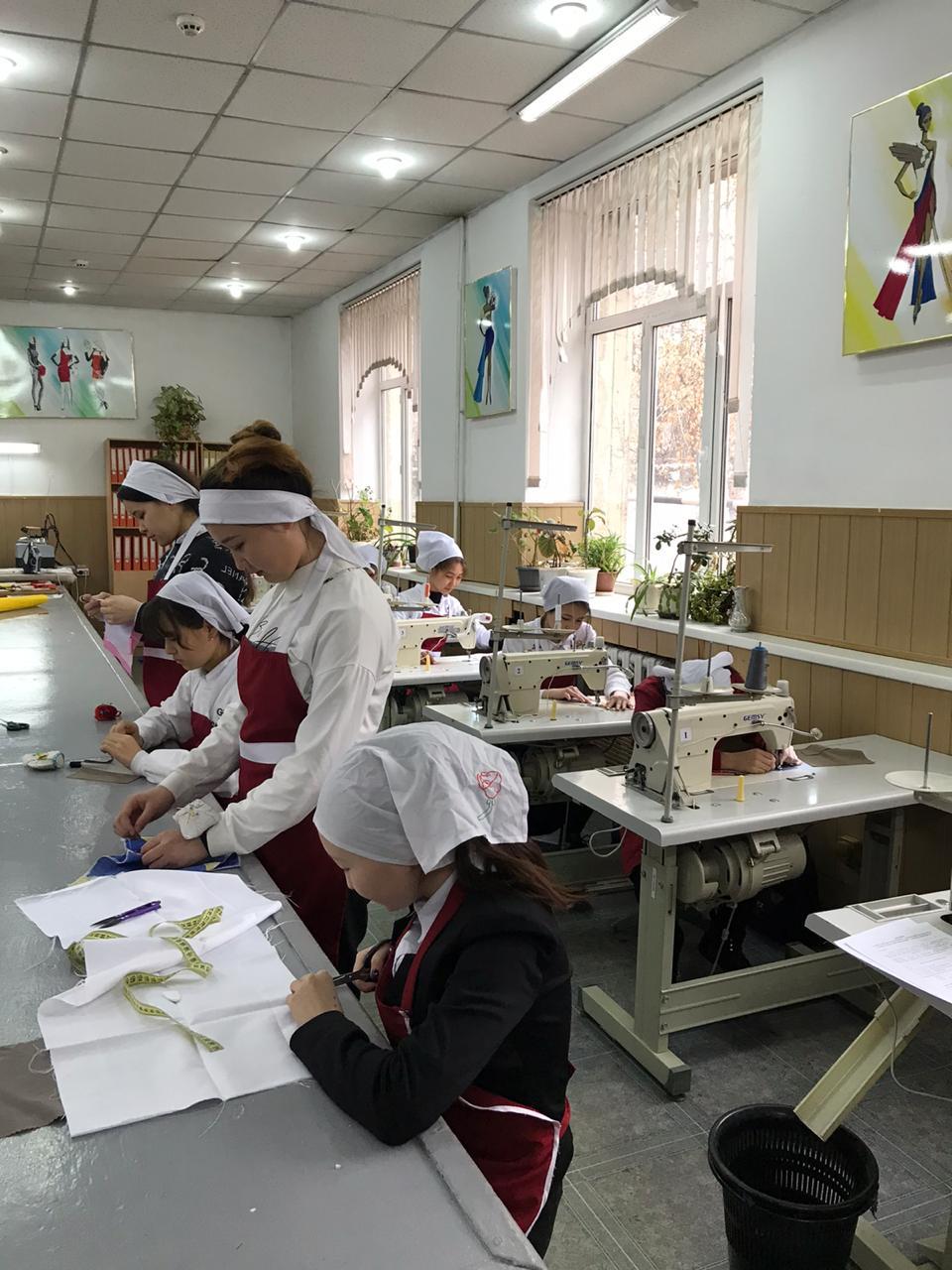


 Получите свидетельство
Получите свидетельство Вход
Вход



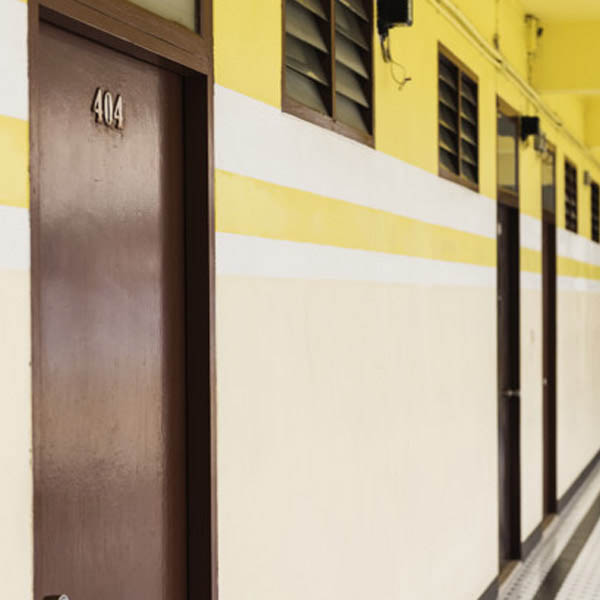
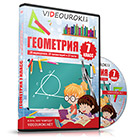
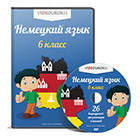


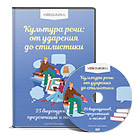
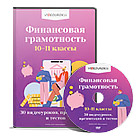

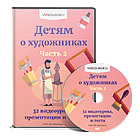
 Бір әдіпті қақпақшалы қалтаны өңдеу (1.1 MB)
Бір әдіпті қақпақшалы қалтаны өңдеу (1.1 MB)
 0
0 993
993 1
1 Нравится
0
Нравится
0


